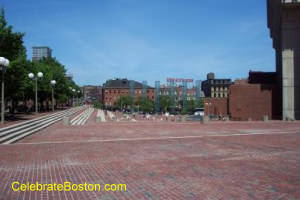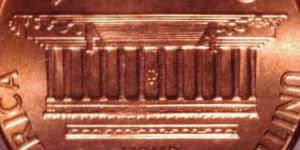 |
Government Center Plaza
In the late 1950s, fifty-six acres of downtown Boston were demolished in an urban renewal project. Many old granite and brick buildings were torn down and replaced with the John F. Kennedy Towers, Center Plaza, and the new Boston City Hall. Adams Square and Scollay Square were completely eliminated. Scollay Square had evolved into a burlesque area, which helped justify flattening the entire square.
The architectural theme of Government Center was that of an Italian piazza. The open air plaza would flow into the new Boston City Hall building. Public business would be conducted in the lower levels, and city business would be conducted in the higher floors. The most important city functions would be in the highest floors, overlooking the plaza.

Occasionally a master plan does not live up to expectations. Someone once remarked, made politically correct by this author: "If Boston is the Hub of the Universe, then Boston City Hall is the least attractive building in the universe." The theory behind larger stories at higher levels in the new city hall was to allow pedestrians to view more of the plaza, but the net result is a feeling that the building is hanging over one's head. The goal behind a wide open plaza was to create recreational space, but the final result is a feeling of being in a wind-swept open field looking for the quickest way out (especially at night).
A joke from 1970-1975 was to ask someone to turn a Lincoln Penny upside down and say, "Look, there's Boston City Hall!" Another joke was to question why the city needed an Italian piazza when Boston Common served the purpose for a couple of hundred years. The Brick Desert was coined at some point during the 1990s as a description of the space. The only saving grace is that summer concerts now take place in the plaza, which draw many people into an area of the city where there are restaurants and bars that cater to tourists.

In 1825, Josiah Quincy developed Quincy Market by first reclaiming land from the sea. He then built the new market, and used the rents to pay for its construction. This author would like to see Government Center Plaza someday reclaimed.
Cornhill Street could be restored as a cobble-stoned pedestrian way, lined with small buildings having brownstone-like facades. Restaurants, bookstores, or antique shops could be on a "new" Cornhill Street. Twin towers could be built opposite the JFK buildings, to balance their visual effect. The new towers could be beautiful brick structures, with art-deco concrete trim, and green metal roofs. At the base of the towers there could be a grass lined walkway with busts of famous Bostonians, from John Winthrop to Mayor Menino, in chronologic order (or other works of art).
Contact Information & Address:
Boston City Hall
City Hall Plaza, 1 Cambridge Street, Boston, MA 02109
cityofboston.gov